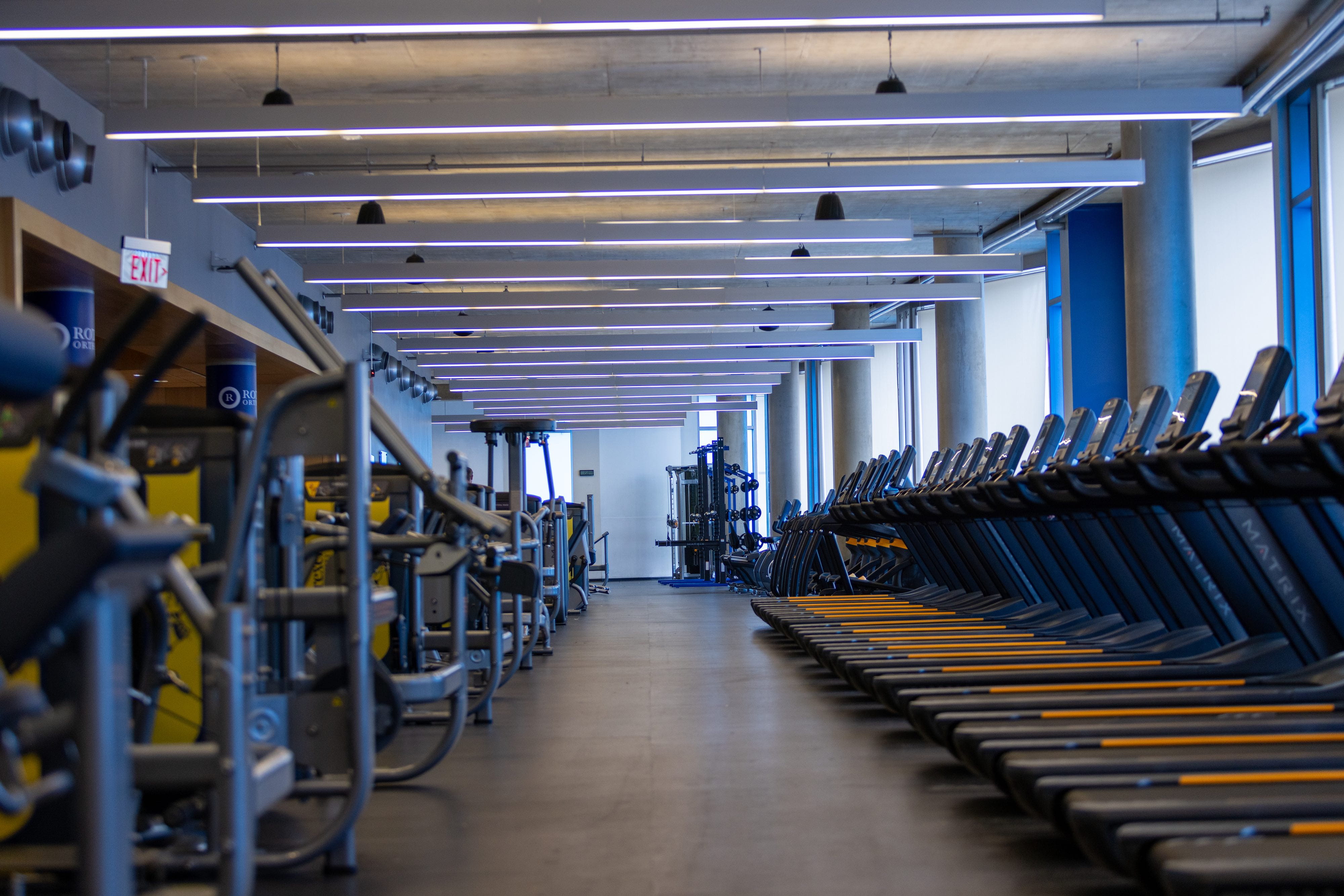Drexel Recreational Athletics Becomes Office of University Recreation, Offers Updated Spaces

When you head back to the Drexel Recreation Center, sign up for intramural sports or look at group fitness classes to take this fall, you’ll notice some changes. That’s because as of Sept. 18, Recreational Athletics was formally renamed the Office of University Recreation, and a whole lot of updates came with that name change. The new name and approach reflects the mindset of being there for the entire University population, including students, faculty, professional staff and the neighbors of the Drexel community.
“We’re on the tail end of our refresh and rebranding,” Director of Campus Recreation James Rogers said. “It’s a holistic refresh of every single piece of equipment in the entire facility. We conducted needs assessments and surveys and got a lot of good feedback from the student body and community members, then worked with a vendor for fitness equipment called Matrix and mapped out an entirely new layout with new equipment.”
The cardio offerings — treadmills, ellipticals, stair climbers, rowing ergometers and upright and recumbent stationary bikes — remained largely the same despite being replaced with new models, but the selectorized equipment, which allows gym goers to select the amount of weight on a machine, was changed a lot. The selectorized machines used to be split into two different floors, so Rogers and the refresh team mapped out a circuit on the second floor to improve the flow of use of those machines.
The amount of free weight equipment increased dramatically. There are now three platforms for powerlifting where there used to be one, and 18 bars for bench pressing where there used to be six. Plus, there is now a second set of dumbbells, more plyometrics and functional fitness offerings, and a new high intensity interval training (HIIT) training area, also known as the Rig, for personal training, group fitness and more, on the third floor.
“It wasn’t necessarily a volume increase; it was more of a reallocation of resources,” Rogers said. “When the facility was built in 2010, cardio and selectorized machines were really popular, so there was a lot of emphasis on that equipment. With industry trends and now, post-pandemic, people are doing more self-guided workouts via social media and fitness influencers, so we pivoted to provide a more plate and free weight style offering.”

As those types of workouts became more popular, the previous small area of the Rec Center with plates and free weights became crowded easily, and Rogers said students would have trouble getting workouts in. Now, that area encompasses 60 percent of the third floor, as compared to about 10 percent before the change.
“Now, we can spread out those students, but retain the essence of who we were as a gym with the cardio and selectorized offerings,” Rogers said. “We cater to a broad clientele of fitness-minded people between our student, employee and community populations”
Crowding was certainly a concern with the refresh and new layout of the space, but Rogers said that a large part of the driving reason behind it was the fact that the equipment was more than eight years old — “ancient” in terms of commercial fitness, he said. It was important to refresh the equipment so gym goers could be excited when they came to the Rec Center.
“We didn’t want to piecemeal an upgrade and take care of some stuff but not upgrade others,” Rogers said. “We didn’t feel as though that would bring the energy and excitement, so we worked over the past two years to see if we could refresh the entire facility with new equipment, new colors and a new feel and energy. We rebranded with a new name and logo in conjunction with that to become the Office of University Recreation, or UREC.”

Aside from the Rec Center refresh, more recreational sports are being introduced, including pickleball and cricket, which will begin in the spring of 2024. There are also three new club sports teams, including esports, women’s wrestling and climbing, and Rogers said a new online program called IM Leagues will help streamline the sports registration process annually.
“On the student experience side, we’re always looking to grow, and this refresh will allow us to provide a higher level of programming for students,” Rogers said. “We want to make sure that UREC becomes a core staple of the student experience at Drexel. It’s not just about the academic experience, but the student experience is a key component.”
Another component of improving the student experience is the University’s recent focus on wellness, from the Health and Wellness Committee to the new Health and Well-Being website and, now, many of the focuses of UREC, which has been on the Health and Wellness Committee.
Fresh Check Day, which is an initiative to raise awareness of suicide prevention and mental health resources, has already been offered on Drexel’s campus around April every year, and Rogers said that will continue. There will also be a new program called Wellness on Wheels, which will bring pop-up wellness sessions including a massage therapist, aromatherapy and Drexel’s therapy dogs to residence halls and departments around campus. During finals weeks, the UREC Destress events will continue as well, which will offer similar soothing experiences to Wellness on Wheels.
“Recreation and athletics as a whole are an important aspect of the student experience, and we want to create a positive student experience through excellence in athletics and recreation,” Rogers said. “There’s a lifelong connection with Drexel and we want them to look back at that positively based on their experiences.”
In This Article
Drexel News is produced by
University Marketing and Communications.

